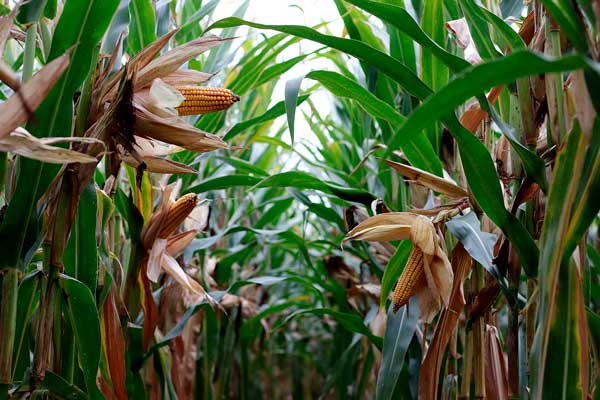What is cornstarch PLA?
As we all know, plastic is so ubiquitous in our daily lives that we don't even realise it any more, even though we should be considerably reducing its use because its extremely long decomposition time makes it a highly polluting material.
Unfortunately, recycling is not enough to counter the ecological disaster it represents. So we're constantly looking for alternative materials that are more respectful of the planet. That's where PLA comes in.
But what is it? Polylactic acid, also known as polylactide (PLA) is a 100% natural bioplastic obtained from the fermentation of plant starch from corn, sugar cane or manioc. The most widely used is cornstarch PLA.

The starch from this carbohydrate can be transformed into plastic; the process begins by fermenting the sugar in this raw material, during which the starch is transformed into lactic acid.
Once this process is complete, the resulting product is treated to obtain a molecular structure similar to that of the most common polymers: the product changes from lactic acid to polylactic acid.
Who discovered this biomaterial and how was it marketed?
PLA polylactic was discovered in 1932 by Wallance Carothers during experiments he was carrying out on lactic acid, while working at DuPont (an American chemical company founded in 1802).
The multinational patented this discovery years later, in 1954 to be precise.
Although its characteristics were then beginning to be studied, its entry onto the market was held back by production costs.
It wasn't until the 1990s that polylactide began to be marketed, thanks to advances in research and investment by Cargill.
It was one of the first bioplastics to be discovered, making it more mature than others on the market.
What are the polylactic acid uses?
PLA polylactide from cornstarch has a wide range of uses, it is not restricted to a single sector and its presence is growing all the time, thanks to the fact that products made from this material share the same characteristics as those made from conventional plastic. But unlike conventional plastic, cornstarch bioplastic is compostable and therefore more environmentally friendly.
PLA corn is used extensively in the textile industry, frequently in the manufacture of fabrics and tarpaulins. It has also been widely used in the medical industry for over 20 years, because of its compatibility with implants and sutures.
It is also widely used in the packaging industry, in food packaging (egg cartons, water bottles, fruit and vegetable bags, etc.) and in bags and tote bags sold at checkouts, making it one of the leading substitutes for single-use products.
We could also mention the 3D printer sector, where PLA is often used as a component for three-dimensional designs. It is highly regarded for its ease of use, low melting temperature and high strength.
As we have seen, PLA raw material has applications in many different sectors, making it a good substitute for trying to mitigate the harmful consequences of excessive plastic use.
What objects are made from cornstarch polylactide plastic?
A multitude of products can be made from this bioplastic polylactic plastic, from coffee cups to tote bags.
These items are often used by takeaways, restaurants and delivery companies looking for alternatives to reduce their ecological footprint and underline their commitment to the environment.
In the world of promotional gifts, it is also increasingly common to find items made from polylactic acid biodegradable, such as jerry cans, ballpoint pens or even raincoats and waterproof ponchos, perfect for rainy days or water theme parks (for those who want to play the game... but not too much either).
Items made from corn bioplastic are high quality and can be printed in full colour, offering a host of customisation possibilities. So it's not surprising that they have become the promotional gifts of choice for many companies concerned about their ecological impact.
How much does cornstarch PLA cost?
Although cornstarch polylactide biodegradable is the most widely used because of its low cost and the abundance of crops (compared with sugar cane or manioc), its price is still higher than that of conventional plastics derived from petroleum.
As a company, beyond the price, you need to consider all the benefits of its use, not only for the environment but also for your reputation.
It may sound like nothing, but in such a competitive world, you have to be sharp and fully aware of your choices to find what will make the difference and set you apart from your competitors.
